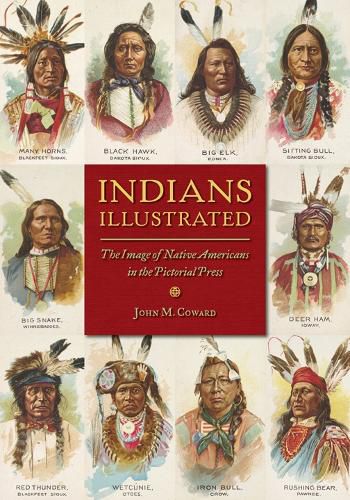Readings Newsletter
Become a Readings Member to make your shopping experience even easier.
Sign in or sign up for free!
You’re not far away from qualifying for FREE standard shipping within Australia
You’ve qualified for FREE standard shipping within Australia
The cart is loading…






After 1850, Americans swarmed to take in a raft of new illustrated journals and papers. Engravings and drawings of buckskinned braves and Indian princesses proved an immensely popular attraction for consumers of publications like Frank Leslie’s Illustrated Newspaper and Harper’s Weekly . In Indians Illustrated , John M. Coward charts a social and cultural history of Native American illustrations–romantic, violent, racist, peaceful, and otherwise–in the heyday of the American pictorial press. These woodblock engravings and ink drawings placed Native Americans into categories that drew from venerable good Indian and bad Indian stereotypes already threaded through the culture. Coward’s examples show how the genre cemented white ideas about how Indians should look and behave–ideas that diminished Native Americans’ cultural values and political influence. His powerful analysis of themes and visual tropes unlocks the racial codes and visual cues that whites used to represent–and marginalize–native cultures already engaged in a twilight struggle against inexorable westward expansion.
$9.00 standard shipping within Australia
FREE standard shipping within Australia for orders over $100.00
Express & International shipping calculated at checkout
After 1850, Americans swarmed to take in a raft of new illustrated journals and papers. Engravings and drawings of buckskinned braves and Indian princesses proved an immensely popular attraction for consumers of publications like Frank Leslie’s Illustrated Newspaper and Harper’s Weekly . In Indians Illustrated , John M. Coward charts a social and cultural history of Native American illustrations–romantic, violent, racist, peaceful, and otherwise–in the heyday of the American pictorial press. These woodblock engravings and ink drawings placed Native Americans into categories that drew from venerable good Indian and bad Indian stereotypes already threaded through the culture. Coward’s examples show how the genre cemented white ideas about how Indians should look and behave–ideas that diminished Native Americans’ cultural values and political influence. His powerful analysis of themes and visual tropes unlocks the racial codes and visual cues that whites used to represent–and marginalize–native cultures already engaged in a twilight struggle against inexorable westward expansion.